An Introduction to Reef Fish Photography
Photographing reef fish can be one of the most challenging types of underwater photography. They aren't usually traditional macro subjects, stuck in one spot. Nor are they a wide-angle subject like a reef scene or larger, pelagic subject.
Reef fish can be the main focus of an image, or they can be a secondary subject, or even just “extras” in the background. This is your introductory guide to reef fish photography, breaking down four types of reef fish images you need to get started: fish ID, fish portraits, fish behavior (or natural history), and fish as secondary subjects.
Fish Identification Photography
Most new photographers start out taking identification (ID) photos. As scuba divers we want to record all the new animals that we see, so we begin by taking ID shots. There is nothing wrong with an ID shot. In fact, it is a great tool for photographers to use in helping themselves and others learn about the animals in the area we are diving in.
ID shots don’t have to resemble mug shots. They can be very artistic when done well. An ID shot characteristically shows the entire animal, usually from the side, so that its color, shape and markings are clearly visible. Typically, it does not tell a story or convey a mood.
Fish ID shots are typically more focused on a side view of the fish, which will often show the distinctive markings, coloration and other identifying marks
One technique that can make the ID shot stand out is to make sure the fish has made eye contact. Another is making sure the fish is facing slightly toward you and not away from you. If you can isolate it from the background either by having nothing but water behind it, or by blurring the background with bokeh, your image will be a step ahead of the rest.
If your subject is closer to you than it is to the background, you can shoot with a medium aperture (f/9 or f/11) and the background will blur. If there is nothing behind the subject, you can use a fast shutter speed (1/250s) to block out ambient light and create a black background, using your strobes to light the subject.
Fish ID shots can also be more artistic: Here, a fast shutter speed and closed aperture creates a stark black background behind the pipefish
Fish Portrait Photography
Portraits of fish, critters, and big animals all have one thing in common and that is they are the main focus of the image. It is critical that the animal be mostly turned toward the photographer to achieve a good portrait. If the fish has the ability to look at you with both eyes, make sure you can see both eyes and that the animal is making eye contact with you before you take the shot.
That being said, the shot does not have to be completely head on. Although this makes a very effective image, it isn’t always done well. A good head-on shot requires a fish that has the ability to look straight forward with both eyes. Some fish have eyes on the side of their head, and cannot look forward. They will always be turning to look at you through one eye. This can be an effective shot as well. If the fish is turned at least three quarters of the way toward you, and the one eye that you see is looking at you, take the shot.
Fish portraits are typically more successful when the subject engages eye contact with the viewer with both eyes
Don’t ignore the possibility of a profile shot. Some of the most artistic images are of animals that have a unique profile. In this case, you still need an eye looking at you, unless the image is silhouetted.
Often, the most unique features on a fish are not its eyes, but some other appendage. You may want to emphasize that part of the animal’s body. For example, the lure on a frogfish, the large flared nostrils of a ribbon eel, or the sharp teeth of a cardinalfish brooding eggs.
For fish who have eyes on both sides of their head, consider shooting more side on
Sometimes the focal point of your fish image isn’t the eyes. Here, it is the sharp teeth and eggs inside the mouth of a brooding cardinalfish
Fish Behavior and Natural History Photography
Sometimes the fish’s environment plays an important role in the image. In this case, you will want to think about what story your image is telling. Does the fish live in a hole? Is it camouflaged by its environment? These are elements that describe the living conditions of the fish and can be instrumental to the story.
Capturing a natural history photo sometimes involves sharing a unique environment—in this case a small goby living at the mouth of a soda bottle
When you are aware of the fish’s environment and what is happening around it, you are more likely to observe a behavior. Behavior shots are the most exciting because they seem to happen in an instant and can be impressive. But you don’t have to rely on dumb luck. Actually, a lot of fish behavior is very common, and can be predicted.
Generally speaking, most reef fish live in the same small area for long periods of time if not their entire life. If you spend a few minutes watching a fish, you might see it perch on the same coral over and over again. The mating behavior of the mandarinfish is so predictable that local dive guides often know the exact hour and place.
I’ve found that if you spend several minutes holding still in the fish’s environment, it will soon become comfortable with you and may even think you have always been a fixture there. Then you can observe and catch the image you are waiting for.
A classic behavior image: two mandarinfish kiss during their daily mating ritual. Asking a local guide for advice on spotting unique behaviors like this is key
Here, a black background creates a stark contrast to the bright orange of the cardinalfish brooding eggs in its mouth
Fish as Secondary Subjects
Sometimes you have a great foreground subject but need a secondary subject. A single fish, or a school of fish is an excellent solution. If your main subject is stationary, you can set up your shot and wait for a fish to swim into it. Sometimes, tapping two stones together will attract fish into your image. A small school of fish behind a shipwreck for example, makes an excellent story because it will tell the viewer that you are in an underwater environment.
Fish aren’t always the main subject. Here, reef fish add a pop of color as a secondary compositional element in front of the coral head
Final Thoughts
Above all, your image should tell a story or convey a mood. Look for things that make you think about what a fish’s life is like. After all, it isn’t an easy life in the ocean and much can be said by a single image.
Telling a story with your fish images will set them apart. Sometimes that story isn’t always happy, as is the case with this green moray still suffering from a fishing hook
RELATED CONTENT
Featured Photographer



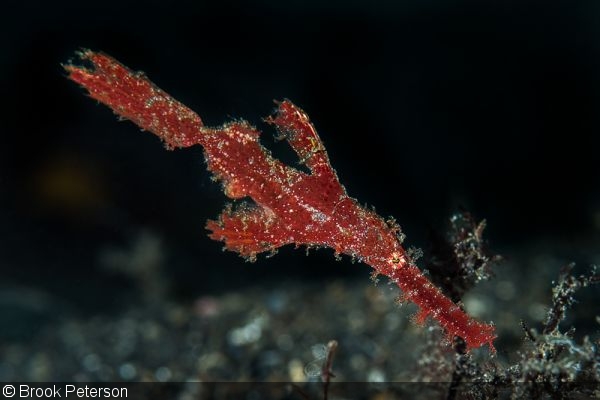
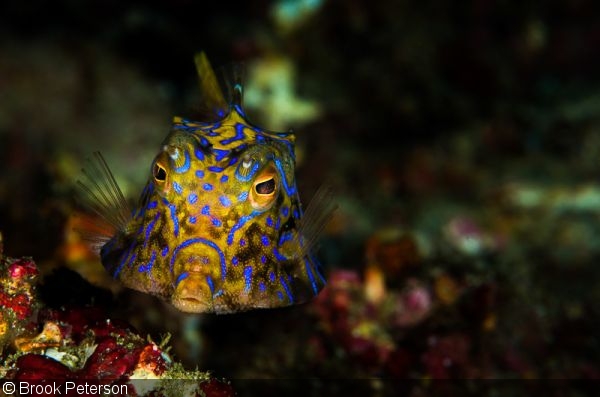
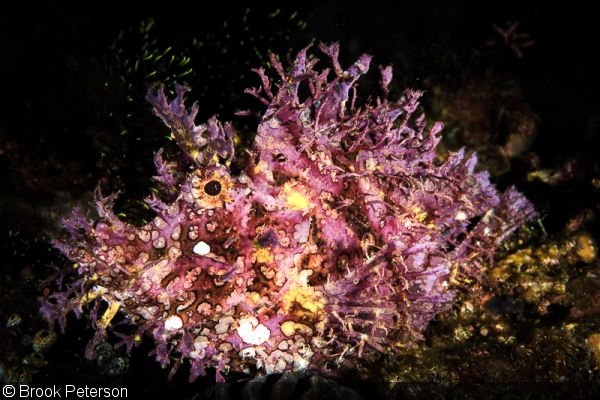
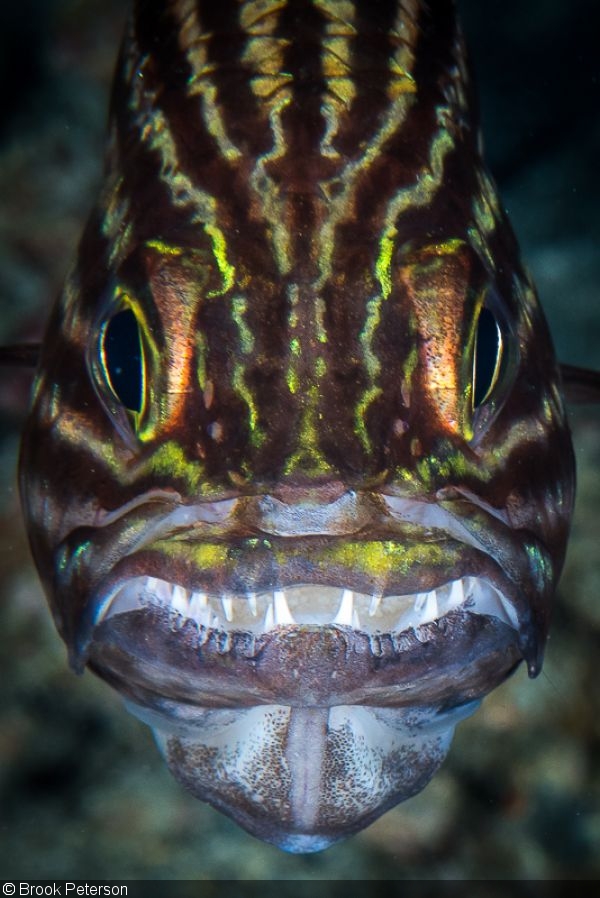
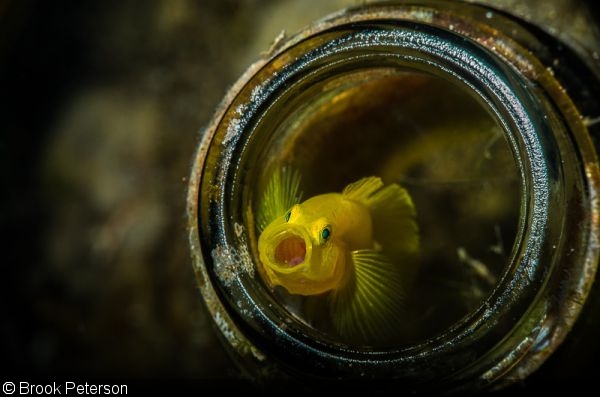
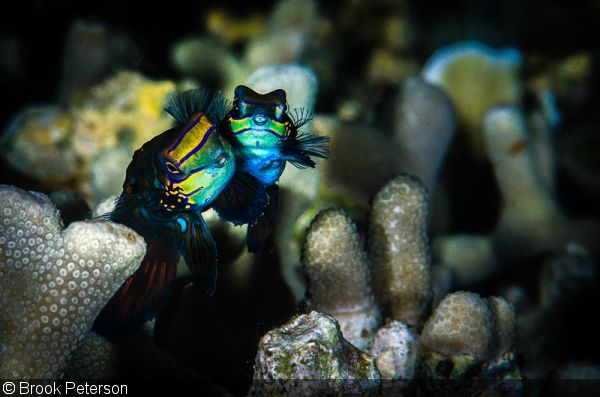

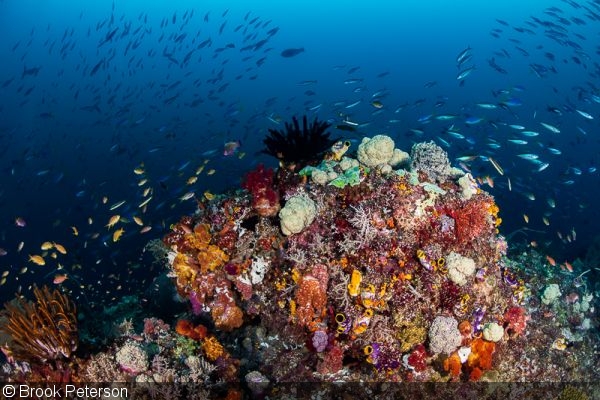
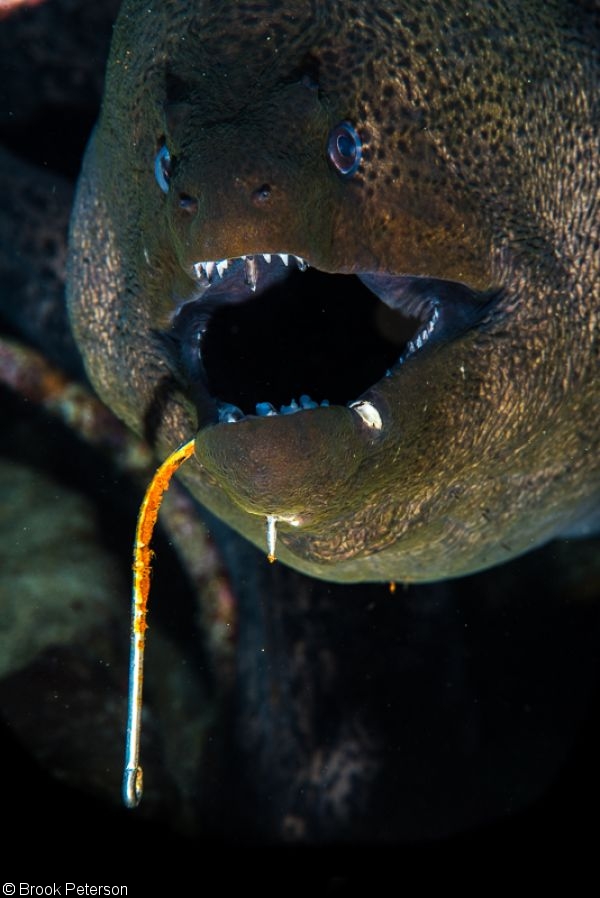
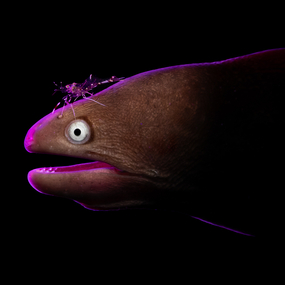
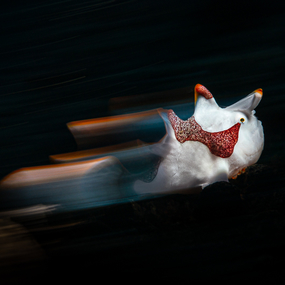
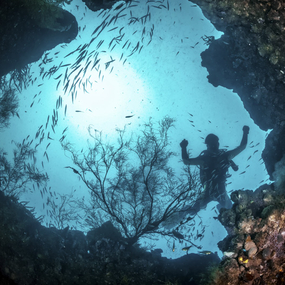
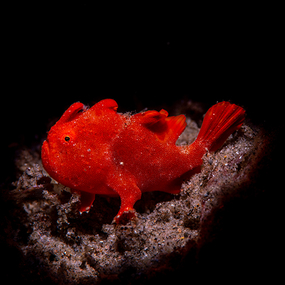
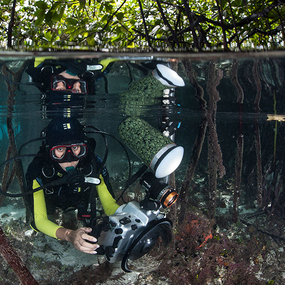
 Antarctica
Antarctica




